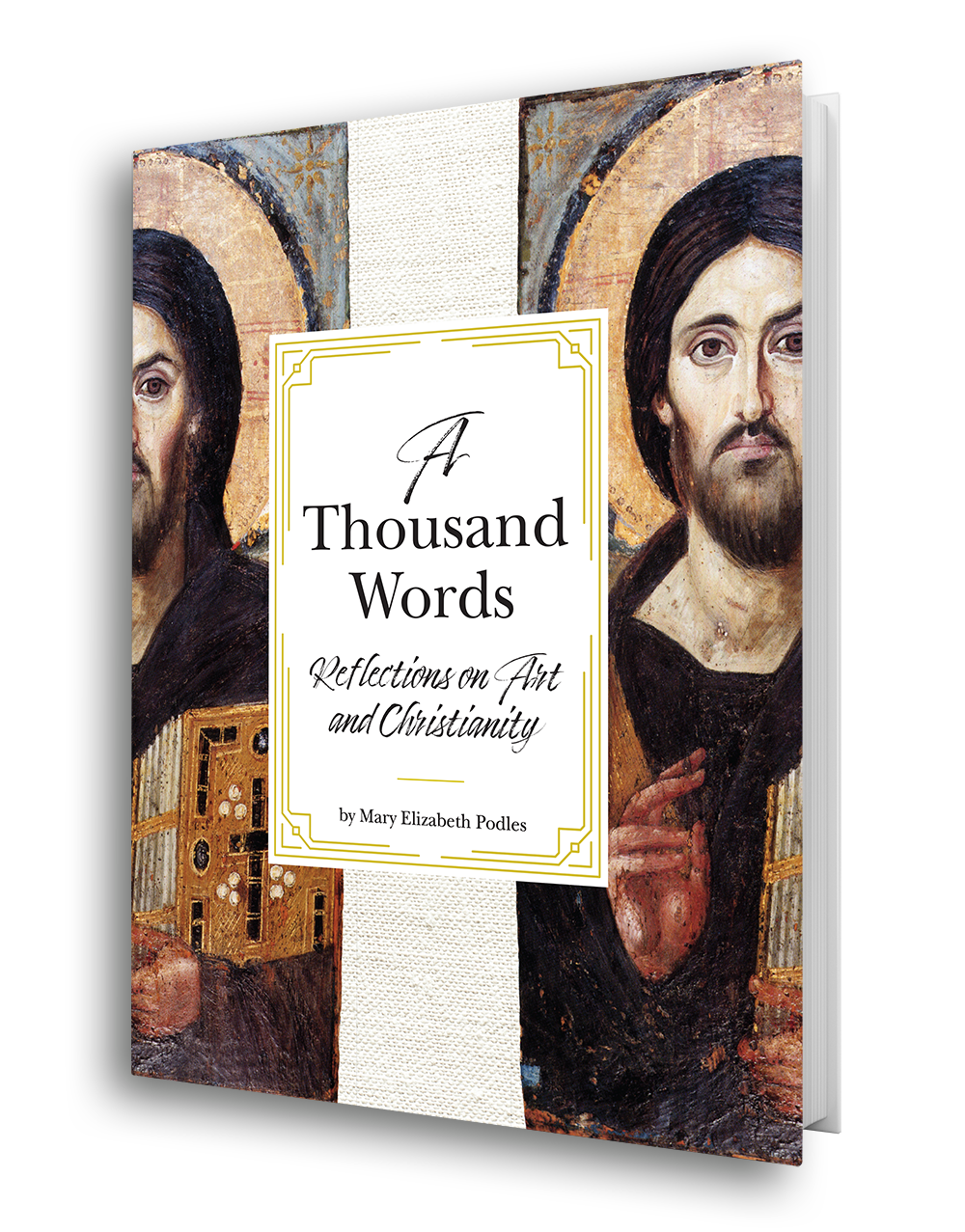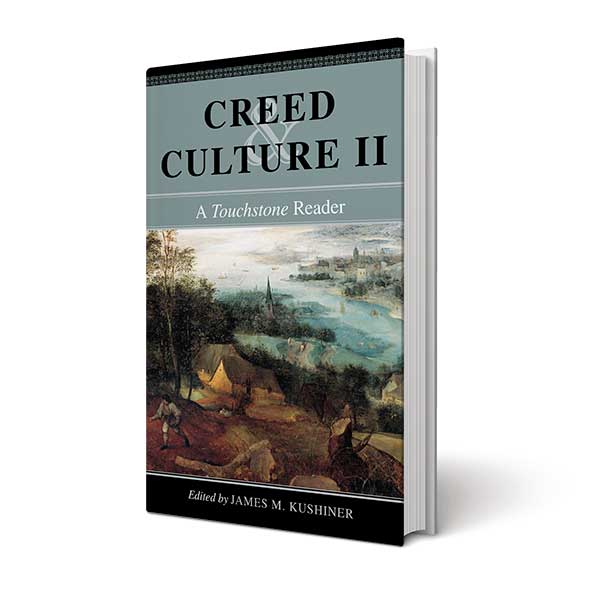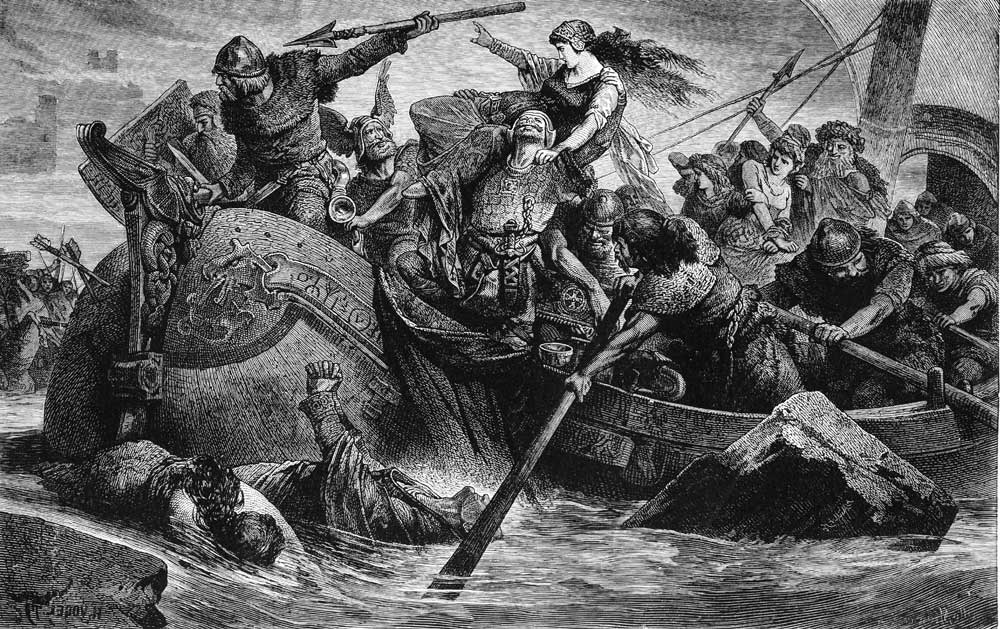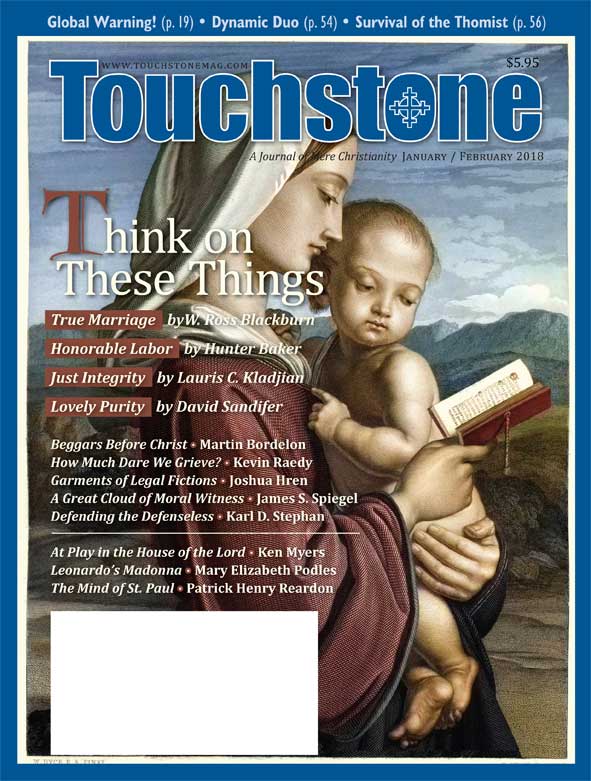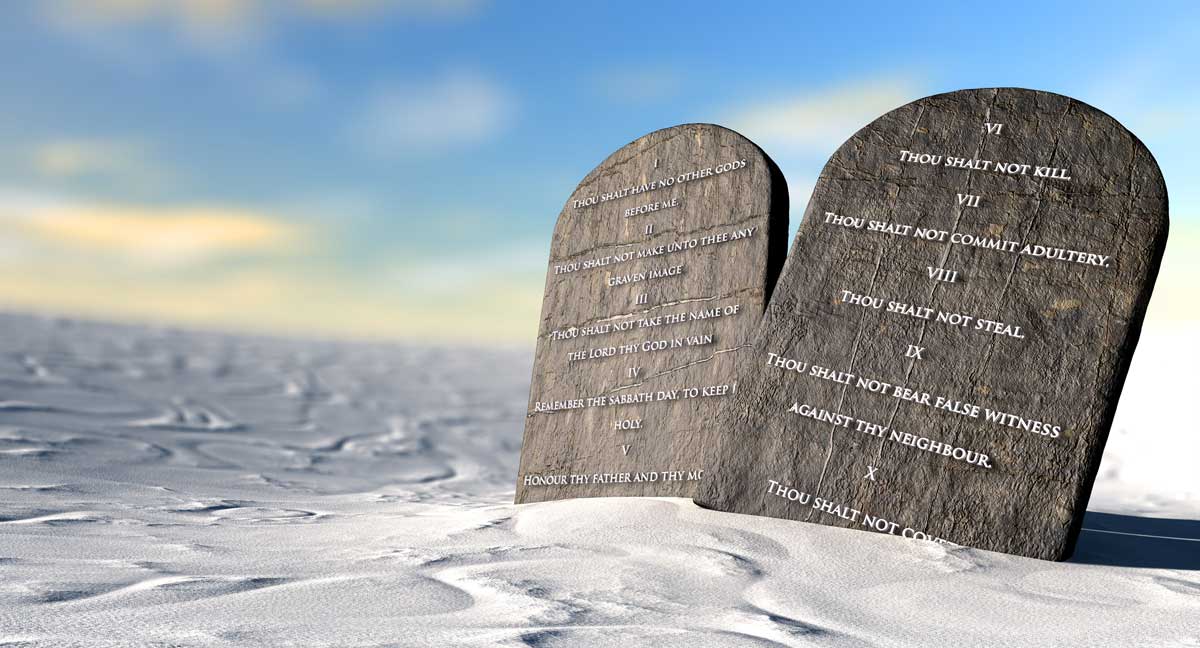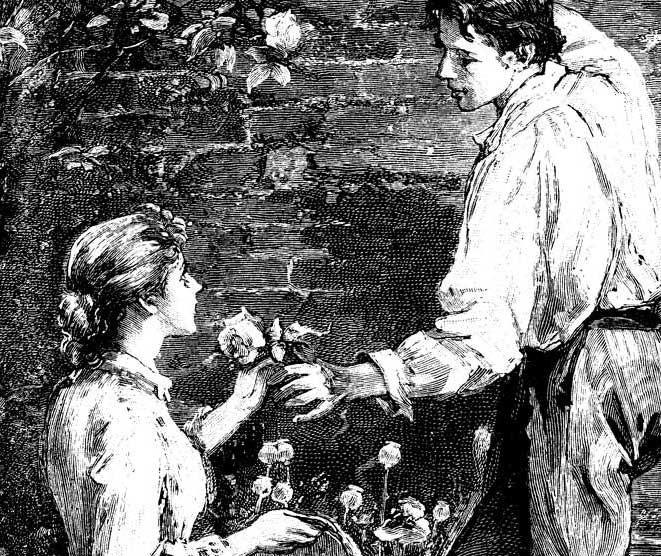View
Vikings Under the Son
Timothy J. Burbery on Ragnarök, an Extreme Weather Event & the Paths to Conversion
One way to foster evangelism is to reflect on conversion stories, and among the most inspiring of these are the accounts of how the Vikings came to faith. If ever there was a people group less likely, humanly speaking, to respond to the Prince of Peace, the violent, imperialistic Norsemen were it. Their storied navigational skills, which enabled them to discover North America centuries before Columbus, were matched only by the notorious cruelty with which they treated their victims.
True, the Vikings have been more favorably reassessed over the last few decades. Yale historian Anders Winroth and other revisionist scholars contend that the alleged atrocities of the Norsemen, such as the blood eagle human sacrifice, are exaggerated or invented. These historians lament that lurid accounts of Viking brutality have overshadowed the fact that the vast majority only wished to live peaceably. But the pendulum seems to be swinging back. For instance, a review of the influential 2013 museum show Vikings: Life and Legend was titled, "Sorry, the Vikings really were that bad."
Apocalyptic Presentiments
We often regard conversion in terms of its endpoint, but of course it involves crucial intermediate stages as well. The Christianization of Viking Scandinavia was a complex, protracted affair, yet is all the more fascinating for that reason. A critical step in the process was an episode in which the Norse people apparently began to contemplate what once might have been unthinkable for them: the staggering possibility that their deities—Thor, Odin, Loki, and the rest—for all their potency, might be mortal. For at the end of the age, according to Norse myth, the entire pantheon would perish in an apocalyptic scenario known as Ragnarök, traditionally translated as "The Twilight of
the Gods."
This envisioned event is depicted in Götterdämmerung, the final opera in Richard Wagner's famous cycle Der Ring des Nibelungen, and it informs pop culture as well, particularly in the Marvel Comics franchise. Marvel has produced a six-part comic-book series on Ragnarök, with a focus on Thor, as well as the popular Thor films (Thor 3: Ragnarök opened in theaters last November). There is also a cyborg uber-villain in the Marvel universe called Ragnarök.
Both the original mythic treatments of Ragnarök and its modern variants invite Christians to reflect on ways our own gods often turn out to be weaker than we first thought. A long-coveted job may end up being hectic and unrewarding. A family member's marriage to Mr. Right may begin to sour. A dream house may become a money pit. Although hardships like these may not be as cataclysmic as the mythical Ragnarök, they can be deeply significant nonetheless. While wrenching, they can prepare us for higher things.
Volcanic Twilight?
Ragnarök is fictional, yet there may be some actual history behind it. The "twilight" reference could be literal and might allude to an extreme weather event that occurred in about a.d. 535 and caused the sun, moon, and stars to be darkened for up to three years. The episode may have been precipitated by an asteroid, a volcanic eruption, or some combination of the two. The volcanic possibility has received the most attention, in part because scientists are now convinced that a super-volcano exploded around this time, and may have caused the unusual
weather.
One strong candidate for this volcano is the caldera that today forms the crater lake of Ilopango in El Salvador. Its eruption in or about a.d. 535 was so violent and ejected so much material that it could probably account for the shrouding of the heavenly bodies over much of the earth at that time, as well as for the concomitant plunge in temperatures, widespread crop failures, and several years without a summer.
This weather episode is chronicled by historians from the period, including the Byzantine Procopius, and has been confirmed by evidence from tree-rings and ice cores. It also may have permanently marked Norse myth. While that tradition is rooted in orality, Norse fables were written down in the thirteenth century by the Icelandic poet Snorri Sturluson, sometimes known as "the Homer of the North." His book The Prose Edda is a mother lode for Norse tales, and our chief source for stories about Thor, Loki, Odin, and others. This series of legends culminates in Ragnarök.
subscription options
Order
Print/Online Subscription
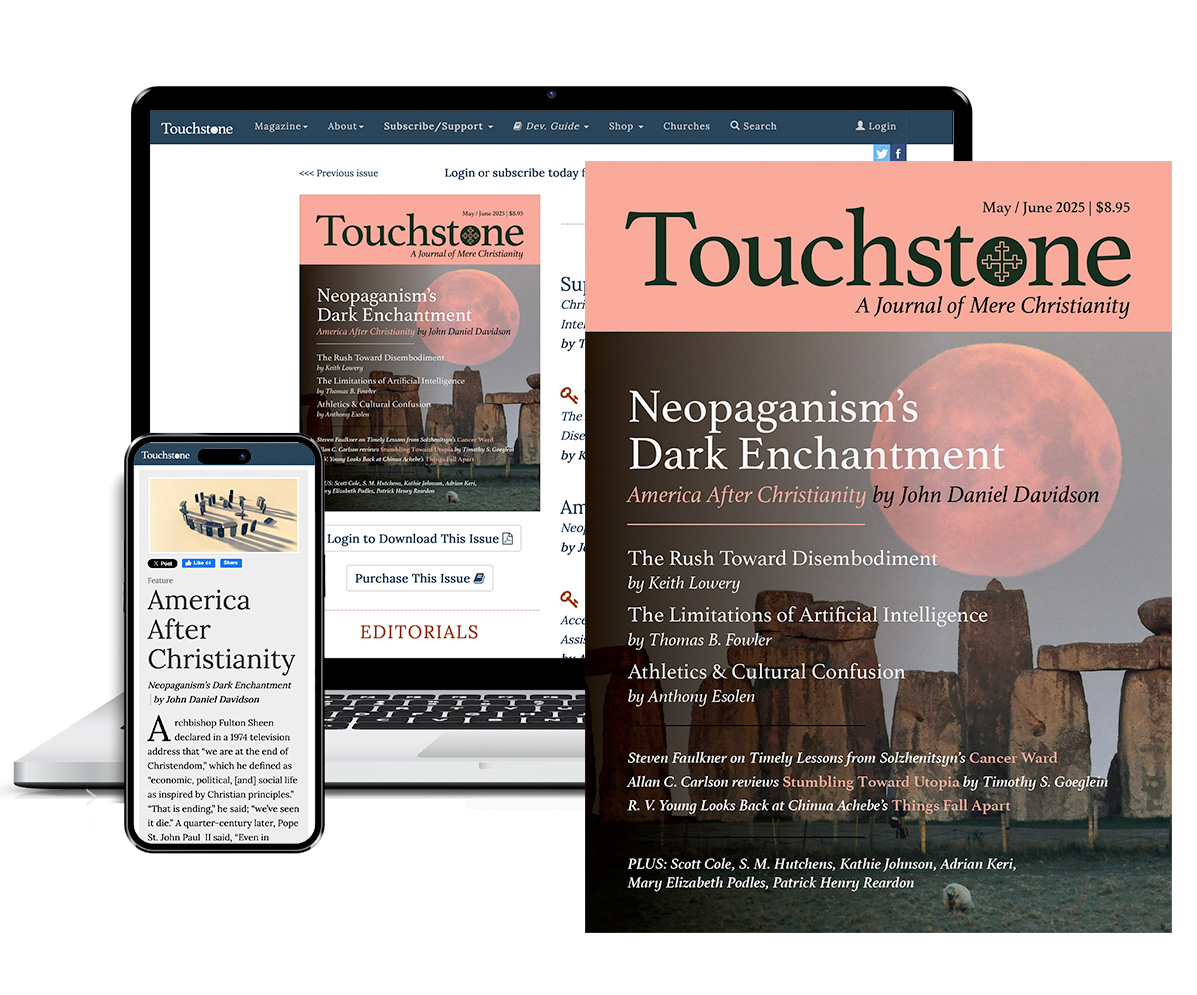
Get six issues (one year) of Touchstone PLUS full online access including pdf downloads for only $39.95. That's only $3.34 per month!
Order
Online Only
Subscription

Get a one-year full-access subscription to the Touchstone online archives for only $19.95. That's only $1.66 per month!
bulk subscriptions
Order Touchstone subscriptions in bulk and save $10 per sub! Each subscription includes 6 issues of Touchstone plus full online access to touchstonemag.com—including archives, videos, and pdf downloads of recent issues for only $29.95 each! Great for churches or study groups.
Transactions will be processed on a secure server.
more on history from the online archives
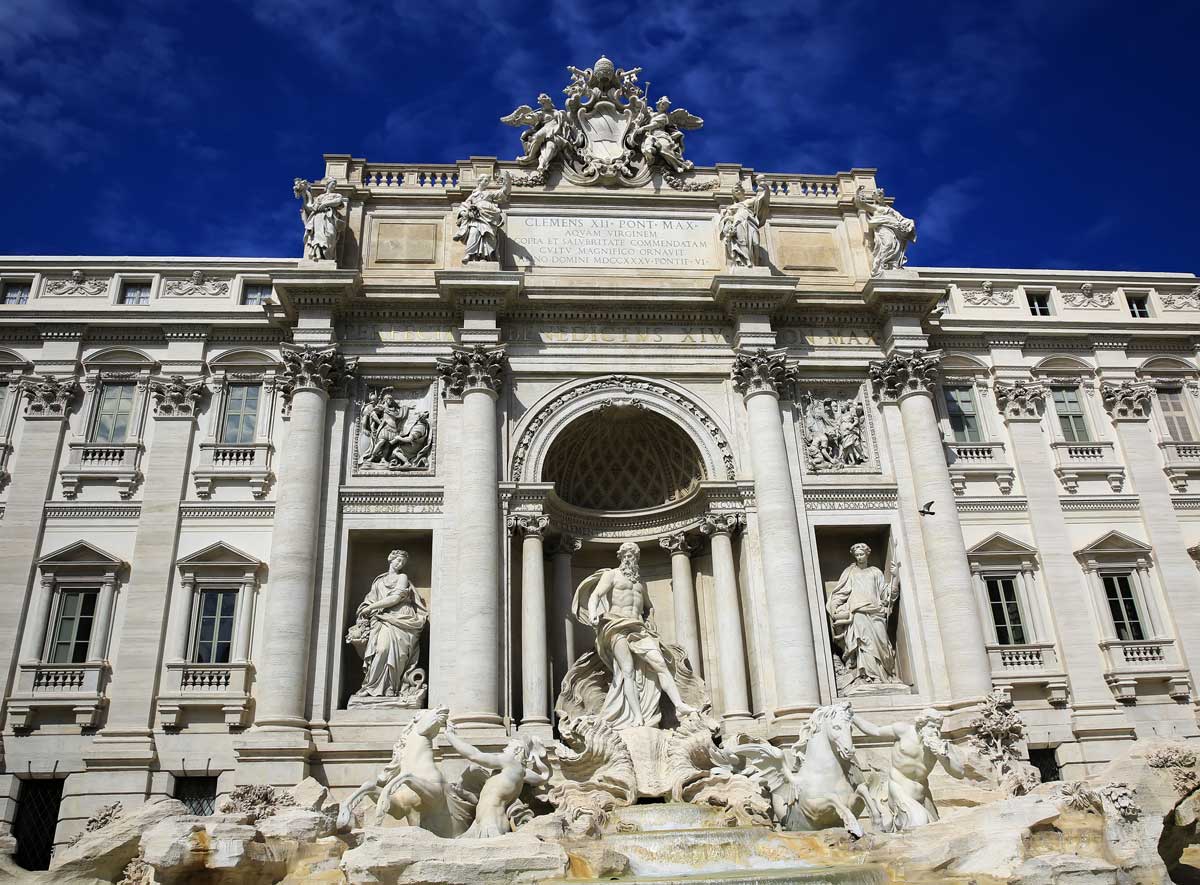
15.6—July/August 2002
Things Hidden Since the Beginning of the World
The Shape of Divine Providence & Human History by James Hitchcock
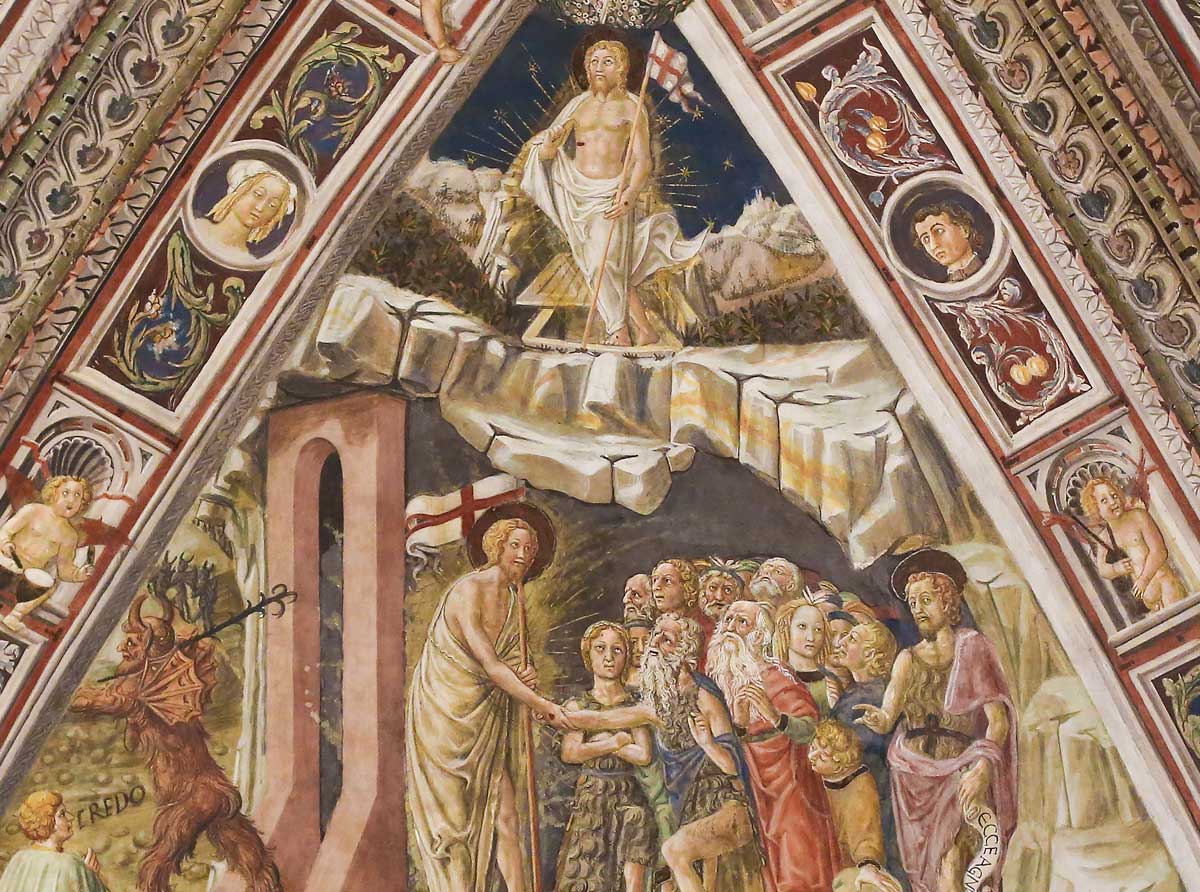
14.6—July/August 2001
The Transformed Relics of the Fall
on the Fulfillment of History in Christ by Patrick Henry Reardon
more from the online archives
calling all readers
Please Donate
"There are magazines worth reading but few worth saving . . . Touchstone is just such a magazine."
—Alice von Hildebrand
"Here we do not concede one square millimeter of territory to falsehood, folly, contemporary sentimentality, or fashion. We speak the truth, and let God be our judge. . . . Touchstone is the one committedly Christian conservative journal."
—Anthony Esolen, Touchstone senior editor



